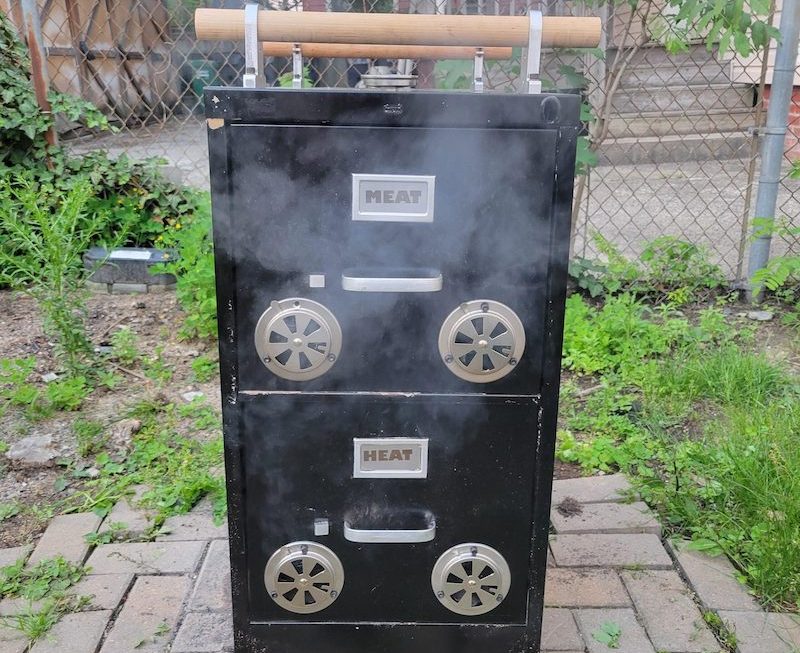Introduction
In today’s fast-paced work environment, organization is key to success. Lateral filing cabinets are essential tools for keeping important documents and files in order. With their space-saving design and ability to hold a large volume of materials, these cabinets are perfect for any office setting. In this article, we will explore the benefits of using a lateral filing cabinet and provide tips on how to maximize its efficiency.
Part 1: Understanding Lateral Filing Cabinets
Level 1: What is a Lateral Filing Cabinet?
A lateral filing cabinet is a type of storage unit that is designed to hold files in a side-to-side arrangement. This means that the files are organized horizontally, instead of vertically like in a traditional vertical filing cabinet.
Level 2: Benefits of Using a Lateral Filing Cabinet
One of the main advantages of a lateral filing cabinet is its ability to hold a large volume of files. The wide drawers can accommodate both letter and legal-sized documents, making it suitable for any type of office environment. Additionally, the horizontal design allows for easy access to files without having to remove and refile other documents, saving time and increasing productivity.
Part 2: Choosing the Right Lateral Filing Cabinet
Level 1: Factors to Consider
When selecting a lateral filing cabinet for your office, it’s important to consider the size and capacity of the unit. You’ll also want to think about the material, locking mechanisms, and any additional features that may be important for your specific needs.
Level 2: Tips for Maximizing Space
If space is a concern in your office, a lateral filing cabinet can be a great option. Look for a cabinet with a slim profile to fit in tight spaces, or consider utilizing the top of the cabinet for additional storage, such as a printer stand or bookshelf.
Part 3: Organizing and Labeling Files
Level 1: Developing a System
Before loading your lateral filing cabinets with files, it’s important to have an organization system in place. This may include arranging files alphabetically, by category, or by date, depending on your preference.
Level 2: Labeling Tips
Clear and concise labeling is crucial for easy file retrieval. Use labels that are easy to read and consider color-coding for even faster identification. You may want to create a legend to explain your color-coding system and keep it visible near the filing cabinet.
Part 4: Maintaining Your Lateral Filing Cabinet
Level 1: Regular Maintenance
To keep your lateral filing cabinet in top condition, it’s important to perform regular maintenance. This may include wiping down the exterior, lubricating drawer mechanisms, and checking for any signs of wear or damage.
Level 2: Purging Unnecessary Files
Over time, files can accumulate and take up valuable space in your lateral filing cabinets. Regularly review and purge any documents that are no longer needed. This will not only free up space but also make finding important files easier.
Part 5: Using a Lateral Filing Cabinet for Maximum Efficiency
Level 1: Utilizing the Top of the Cabinet
In addition to storing files, the top of a lateral filing cabinet can be a great space for other office accessories. Consider using this space for a printer, scanner, or additional supplies to maximize efficiency in your office.
Level 2: Incorporating Digital File Storage
While lateral filing cabinets are great for physical files, consider incorporating digital file storage to further streamline your document management. This may include scanning important documents and creating a digital filing system to supplement the physical files in your cabinet.
Part 6: Benefits of a Lateral Filing Cabinet
A lateral filing cabinet offers several benefits that make it a popular choice for organizing and storing documents. One of the main advantages of a lateral filing cabinet is its ability to hold a large amount of paperwork while still being easily accessible. The wide drawers of a lateral filing cabinet allow for easy retrieval of files without having to dig through stacks of papers, making it an efficient solution for busy office environments.
Another benefit of a lateral filing cabinet is its versatility. These cabinets come in a variety of sizes and designs, making it easy to find the right fit for any office space. Some lateral filing cabinets also come with additional features such as locking mechanisms, anti-tilt technology, and adjustable glides, providing added security and stability.
In addition, lateral filing cabinets are compatible with most filing systems, including hanging file folders and file jackets, making them a flexible storage solution for a wide range of documents. The ability to organize files in a way that suits the specific needs of the office can greatly improve workflow and productivity.
Part 7: How to Choose the Right Lateral Filing Cabinet
When selecting lateral filing cabinets for your office, there are several factors to consider to ensure that you choose the right fit for your needs. The first consideration is the size of the cabinet, as it should be able to accommodate your current and future storage needs. Also, consider the material of the cabinet, as metal and wood options offer different levels of durability and aesthetics.
Another important factor to consider is the security features of the cabinet. If you are storing sensitive or confidential documents, look for lateral filing cabinets with a reliable locking mechanism to ensure the safety of your files. Additionally, consider the accessibility and organization of the cabinet, as features such as adjustable glides, anti-tilt technology, and multiple drawer options can greatly improve functionality.
Furthermore, think about the overall design and style of the cabinet to ensure that it complements the aesthetics of your office space. Whether you prefer a modern, sleek design or a more traditional look, there are a variety of options available to suit your preferences.
Part 8: Maintenance and Care of Lateral Filing Cabinets
Proper maintenance and care of a lateral filing cabinet are essential for ensuring its longevity and functionality. Regular cleaning and dusting of the cabinet will help prevent the buildup of dirt and grime, which can affect the smooth operation of the drawers. Additionally, lubricating the drawer slides and hinges with a silicone-based lubricant will help maintain their smooth movement.
It is also important to periodically check for any loose or damaged parts, such as handles, locks, or drawer mechanisms, and repair or replace them as needed to prevent further damage. Furthermore, regularly inspecting the cabinet for signs of wear and tear, such as dents, scratches, or rust, will help maintain its appearance and functionality.
In addition, it is important to be mindful of the weight capacity of the lateral filing cabinet and avoid overloading the drawers with heavy or bulky items. Properly organizing and distributing the weight of the files will help prevent strain on the cabinet and ensure its structural integrity over time.
By following these maintenance and care tips, you can ensure that your lateral filing cabinets remains in good condition and continues to serve as an efficient and reliable storage solution for your office.
Conclusion
A lateral filing cabinet is a valuable asset for any office environment. With its space-saving design and capacity for a large volume of files, this type of cabinet can help keep your office organized and efficient. By understanding how to choose the right cabinet, maintaining it properly, and utilizing it to its full potential, you can make the most of this essential office tool.






